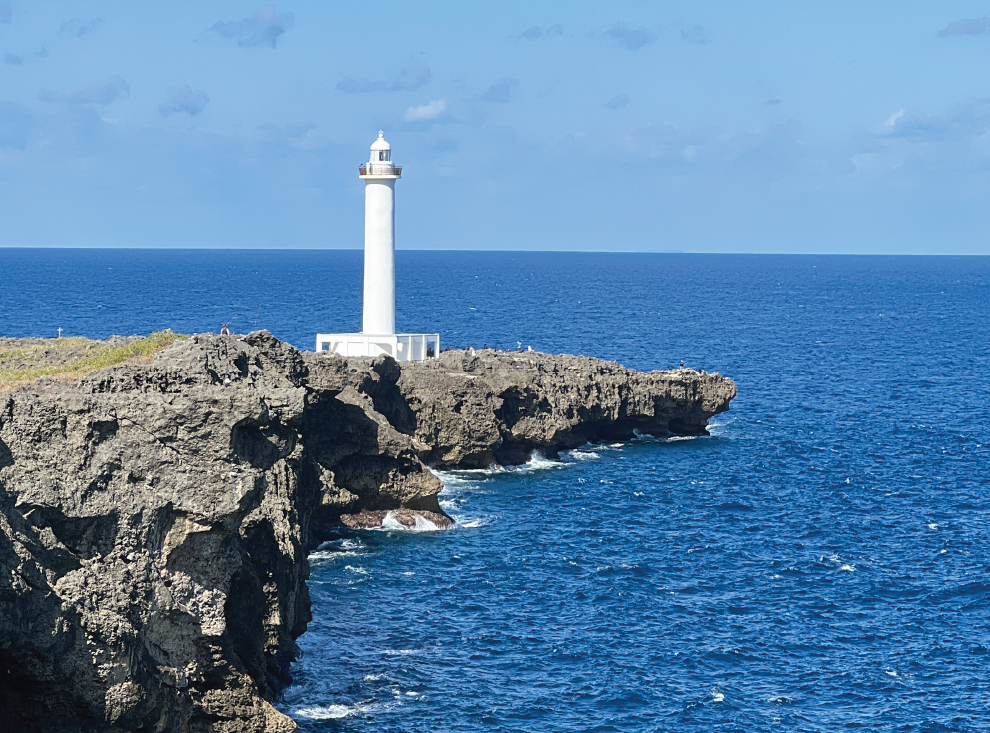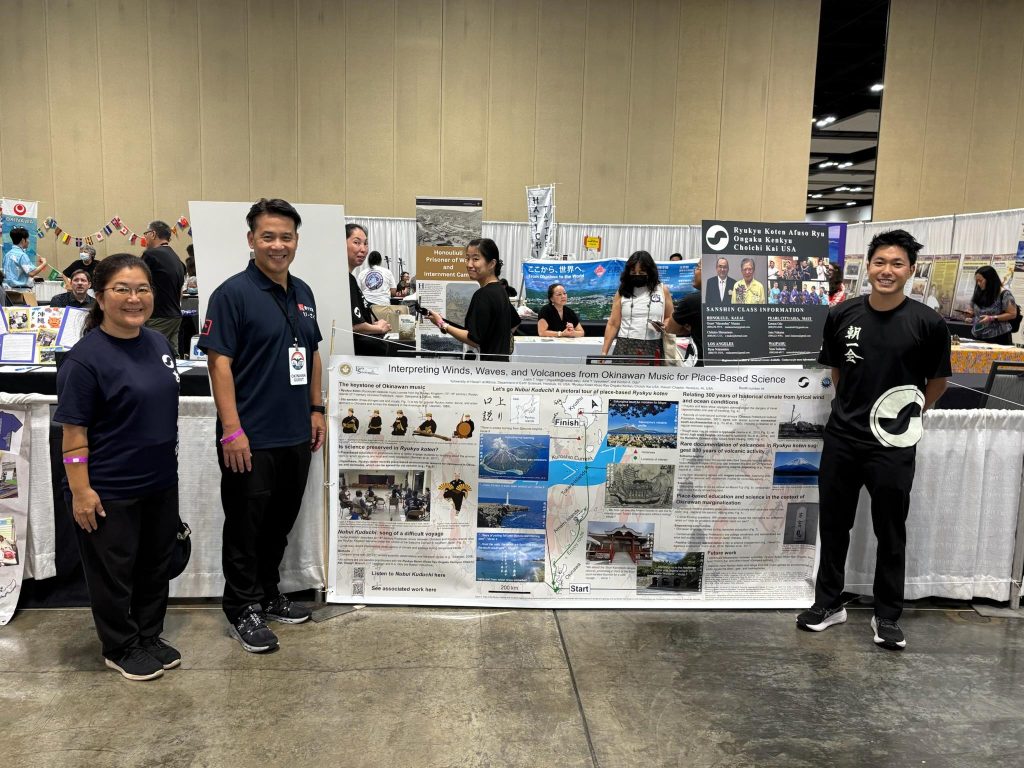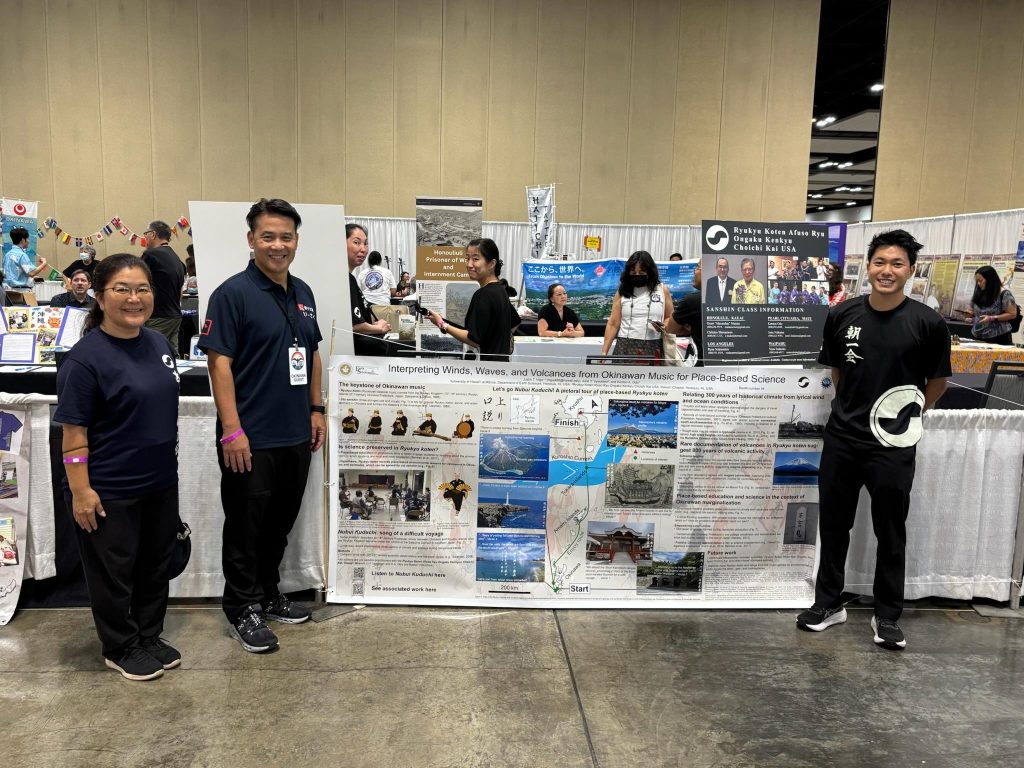 Zampa on Okinawa Island. 18th-century Ryukyuan voyagers’ travels were recorded in song.
Zampa on Okinawa Island. 18th-century Ryukyuan voyagers’ travels were recorded in song.
The lyrics of traditional Okinawan songs were found to record past climate and geological history of the Ryukyu Islands, now called Okinawa Prefecture, in Japan, according to a new study by a University of Hawai‘i at Mānoa Earth scientist and fellow Ryukyuan music practitioners.
Their study was published in Geoscience Communication and was selected as an Editor’s Choice article by the journal’s publisher.
“This paper is a proof-of-concept for using classical Ryukyuan music as records of Indigenous knowledge,” said Justin Higa, lead author of the study and postdoctoral fellow in the university’s Department of Earth Sciences. “This work aims to show how science and culture are not two distinct entities, but can be combined to teach both Indigenous arts and Indigenous science.”
 Authors with their poster at the 2025 Okinawan Festival.
Authors with their poster at the 2025 Okinawan Festival.
ARTICLE CONTINUES BELOW ADARTICLE CONTINUES BELOW AD
The study assessed a repertoire of Indigenous Ryukyuan classical music that documented the 18th-century ocean voyages of envoys from the Ryukyu Kingdom and the winds, waves and volcanoes they observed along the way.
With Higa’s geologic background and the musical expertise of master instructors June Uyeunten and Kenton Odo, the authors worked together to combine Indigenous Ryukyuan knowledge in song with Western scientific knowledge in the scientific literature to find where the knowledge matched.
The authors are all classical Ryukyuan music practitioners with the Ryukyu Koten Afuso Ryu Ongaku Kenkyu Choichi Kai USA, Hawaiʻi Chapter, a music school with groups on Oʻahu, Maui and Kauaʻi, and in Los Angeles.
By comparing these observations with 20th- to 21st-century scientific literature, they found wind directions in the songs match seasonal changes following the East Asian Monsoon season and that rough ocean conditions may be related to Pacific Ocean circulation patterns and typhoons in the past and currently. They also interpreted a record of an 18th-century volcanic eruption on an isolated island.
ARTICLE CONTINUES BELOW AD
“Indigenous knowledge, tied to the land someone is most familiar with, is one avenue for applying place-based learning to make complex environmental science more accessible to general learners,” Higa said.
“Identifying sources of Indigenous knowledge, by the knowledge holders/practitioners themselves, is a unique opportunity to make new connections between art and science, improve how we connect science to the daily lives of Indigenous Peoples, and ensure the correct interpretation and usage of Indigenous knowledge.”
With 2025 marking the 125th anniversary of Okinawan immigration to Hawai‘i, incorporating geoscience and his Okinawan heritage in this publication is especially meaningful to Higa.
ARTICLE CONTINUES BELOW AD
“I hope this work can help connect the descendants of Okinawan immigrants in Hawai‘i, who generations later, may not speak the language, with the arts and knowledge recorded in these songs,” Higa said. “More of these descendants may then be inspired to become scientists or Indigenous practitioners, or both.”
In the future, the authors hope to catalog more classical and folk Ryukyuan songs to document additional historical records of environmental science, including water resources, ocean life, and flora and fauna.


AloJapan.com